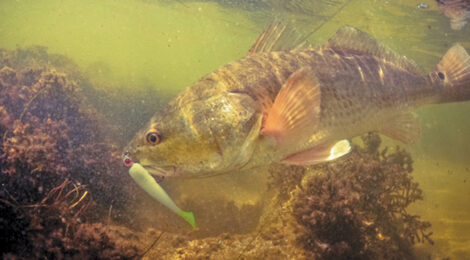
Fishing Structure for Specks & Reds
Fish relate to structure and, knowing when and how to fish each type of structure is key to consistently producing good catches.
Story and photography by Danno Wise
The Texas coast encompasses hundreds of miles of shoreline and dozens of bays, back lakes and marshes. The salty waters within are filled with a variety of fish attracting structures. Different areas of the coast are known for different types of structures, although just about each type is represented to some degree in each of the Texas coastal regions.
Most anglers know that fish relate to structure. However, knowing when and how to fish each type of structure is key to consistently producing good catches of specks, reds and other inshore gamefish.
One of the most common things fishermen hear in various reports is “fishing scattered shell”. But, what exactly does that mean?
Essentially, areas of scattered shell are large flats with a smattering of oyster or mussel shell covering the bay bottom. These areas are most common on the Upper and Middle Texas Coast regions. Fishing these areas is a lot like fishing other types of flats. The biggest difference is the shell itself draws in good numbers of fish – speckled trout in particular.
Matagorda guide Capt. Tommy Countz fishes scattered shell quite often in his home waters of East and West Matagorda bays. Although the majority of his time is spent in the Matagorda area, his tactics for scattered shell will work wherever these types of flats are found.
“We work a lot of scattered shell, mainly in East Matagorda Bay, that produce fish all year round,” said Countz. “When I’m fishing these areas, I like to look for bait activity to help me zero in on what part of the flat is holding fish. “Most of the west end on East Matagorda Bay is solid scattered shell and the water is no more than six feet deep. In the winter when the water gets cooler, it also can get crystal clear. We avoid the really clear water and look for off color streaks.
************************************************************************
To read more, click here to SUBSCRIBE








